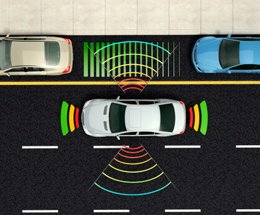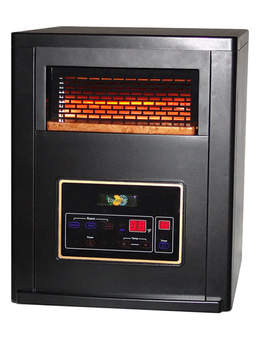
by Flagship Staff | Mar 7, 2018 | Blog
Having worked in the insurance industry for most of my career, I’ve talked to many people about the benefits of a West Bend insurance policy. While many people were interested in learning more, I often heard that getting a quote is confusing and time consuming.
Buying a different insurance policy isn’t exciting or fun and it can be overwhelming. However, you owe it to yourself to make sure you have the best coverage available for you and your family.
The next time you consider getting an insurance quote, here’s some of the information you’ll need to provide to your independent insurance agent.
Homeowners Insurance
Owning a home is probably the biggest financial investment you’ll make. It’s important to make sure it’s adequately protected. Here’s some information you’ll have to provide regarding your home.
1. Residency.
Who lives with you;
Home address;
How long you’ve lived there;
Marital status;
If business operations are conducted from your home; and
If you have any pets.
2. Home characteristics.
Year built;
Total finished square footage;
Number of stories;
Number of bedrooms;
Number of bathrooms;
Safety features (i.e. home security system, fire sprinklers etc.);
Roof type and age;
Exterior construction; and
Home improvements (i.e. finished basement or remodeled kitchen.)
3. History.
Who’s your current insurance company?
How much is your current coverage on your home and personal property?
Do you have a mortgage and if so, name of your mortgage company?
Have you had past insurance claims?
Renters Insurance
Renters insurance is more straightforward. Its purpose is to cover your personal belongings, as well as provide some liability coverage.
It’s important to understand, that there are a couple of misconceptions about renters insurance. People often tell me their property owner has insurance or they don’t own anything expensive so they don’t need it. Most often, the property owner’s insurance policy only covers the building. In addition, if you add up your personal belongings, you’ll probably be surprised about their value. What would you do if you lost everything in a fire?
Auto Insurance
While not all states require auto insurance, they do require financial responsibility. Financial responsibility means that if you cause damage or injury to another person or their property, you have the financial means to pay for the damage.
Here’s some information you’ll have to provide for an auto quote.
1. Vehicle information.
Purchase date;
Mileage;
Vehicle type i.e. year, make, model;
Vehicle Identification Number (VIN);
Current insurance company;
Garaging location;
Loan information;
Safety devices; and
Business or personal.
2. Diver information.
Full name;
Date of birth;
Marital status; and
Profession.
3. Driving history.
Tickets and accidents; and
Mileage driven each day.

by Flagship Staff | Feb 27, 2018 | Blog
This year’s flu season has grabbed our attention. Hospitalization for people infected with the flu has increased for the first time since 2013. In addition, there have been numerous reports of healthy people dying from complications with the flu.
There are a number of reasons the flu is worse than normal this year.
1. The flu vaccine is only 25% effective.
2. Multiple strains of the flu are circulating at the same time.
3. H3N2, a prevalent strain of Influenza A, can cause some peoples’ immune systems to go into overdrive causing more inflammation, which makes them sicker.
If your family has experienced the flu this season, it’s important to clean your home to prevent the spread of the virus. While disinfecting your entire house can be overwhelming, experts recommend focusing on frequently touched items or surfaces.
When it comes to disinfectants, there are many options. You can buy products such as Lysol spray or Clorox disinfectant wipes. Make sure to read the product’s label before buying. Other home remedy cleaning solutions may work just as well.
Here’s a list of common household items you should disinfect in your home.
1. Mobile device(s). Whether we admit it or not, we spend countless hours on our mobile devices. It’s estimated that in the U.S., people spend up to five hours per day on their mobile devices. Since cold and flu viruses can live on them for a few days, it’s important to clean them regularly.
2. Computer keyboards. If your child is home from school sick, but is doing schoolwork on your family computer, it’s a good idea to clean it after each use.
3. TV remotes/video game controllers. TV remotes and video game controllers are used quite frequently, but are probably never cleaned. An ill family member may use them to pass time.
4. Doorknobs, handrails, and faucets. These items are common touch points in our homes. Germs live the longest on hard surfaces.
5. Kitchen and bathroom countertops. These countertops are used frequently and may contain the most germs in your home. Use disinfectant wipes or paper towel in combination with a spray. Don’t use a sponge because germs can live inside it.
6. Children’s toys. If you have small children, everything tends to go in their mouths. Clean their toys daily with warm soapy water and dry them using paper towel.
Here’s a list of additional precautions you can take to prevent the spread of the flu virus.
1. Toss the toothbrush. If you have a cheap toothbrush, throw it away. If it’s your favorite toothbrush and you don’t want to part with it, look online for ways to disinfect it.
2. Use disposable towels. Hectic schedules during the week can make it difficult to keep up with laundry. Using disposable towels cuts down on laundry and prevents the spread of germs from sharing towels.
3. Avoid touching your eyes, nose, and mouth.
4. Wash your hands frequently. Wash your hands frequently with soap and water for at least 20 seconds. Alternatively, use an alcohol based hand sanitizer that contains at least 60% alcohol.

by Flagship Staff | Feb 20, 2018 | Blog
A few months ago, I purchased a new car. Because my previous car was 10 years old, it didn’t have all the safety technology that’s installed on new cars.
While this new technology is nice and helps you with your driving, keeping the sensors clean during the winter months is important.
Here are some of the safety sensors that may be on your car.
1. Forward Collision Warning System (FCW). Car manufacturers have done a nice job installing the sensors, so it may take you a couple of strolls around your car to find them. FCW checks the road in front of you and is designed to warn you if a car in front of you is traveling at a slower speed or has stopped. If this is the case, the system may send you a variety of warnings, such as sounds, visuals, vibrations, or a brake pulse.
Because these sensors may be located in the grille or front bumper, they can become blocked by snow, ice, or dirt quickly and easily. When removing snow from your car, don’t forget about these sensors.
2. Adaptive Cruise Control. This system automatically adjusts your speed if you approach a car that is traveling slower than you are. This system may use radars that are mounted in your grille and an in-vehicle camera.
3. Blind-Spot Monitoring System. This system warns you of cars or motorcycles that are hidden from you i.e. in your blind spot. In the good ole days, blind spot mirrors where used to help with this. Today, this system alerts you by sound, visualization, or vibration. In my car, the outside mirrors light up with an orange color. The radars for this system are usually found in your car’s rear quarter panels. While this part of the car doesn’t get as dirty as the front and rear, it is important to be mindful of where they’re located.
Blind-spot monitoring systems work best at highway speeds and should not be relied on 100% of the time. Before making a lane change, it’s still important to look over your shoulder.
4. Rear Camera. The rear camera is a wonderful set of extra eyes. This safety device helps you see directly behind your car. It doesn’t allow you to see pedestrians or traffic moving from side to side. This winter, I’m constantly cleaning the camera because of road spray. On my car, the camera is slightly above the license plate on my tailgate.
5. Back-up Warning/Rear Cross Traffic Alert. These sensors provide an audible alert as you get close to things or as rear cross traffic approaches your car. The closer an object, the faster the alert sounds. These sensors are in usually in your car’s rear bumper.
6. The Windshield. Cameras and other technology such as automatic windshield wiper sensors may be built into the glass. Make sure your entire windshield is clear of snow and ice. The little peep hole that some motorists use is not sufficient for safe driving.
If your car has this technology, a regular car wash can help keep it free and clear of snow, ice, and road spray. If the temperature is too cold, a small damp cloth may do the trick.
Please be mindful that road spray may contain salt and sand, which can scratch your paint.
If you have difficulty finding the sensors on your car, please refer to your owner’s manual or give your local car dealership a call.
Finally, never rely fully on your safety sensors. Always use your eyes to keep track of what’s happening around your vehicle.

by Flagship Staff | Feb 13, 2018 | Blog
Smart home technology use is a rising trend. From connected appliances to Wi-Fi lightbulbs to automated environmental controls, smart home devices are wooing homeowners with the capabilities to remotely control and monitor their home from anywhere.
After all, smart technology can inform you when your kids get home from school. It can alert you to a burst pipe before the damage gets out of control. It can save you money and time. Unfortunately, all that connectedness brings along some concerns. Your privacy and security may be at risk.
The very definition of a smart home is that there are features that can be controlled via an app or other remote access portal, like a website. This typically requires an internet connection, so that your home devices are accessible from afar. But the minute you can access a device from the internet, someone else can, too. Here’s how to protect yourself from the risk of hacking.
Read the Fine Print
Not all security and privacy concerns result from illegal activity. Each time you use a website or app, or sign up for a connected service or product, you agree to their terms and conditions. Read and understand the fine print, which typically includes a privacy policy, and don’t be afraid to pass on services that don’t take your privacy seriously.
Secure Your Home Network
Your home network is the gateway to your house. Take the time to set it up properly and ask for help if you don’t know how. Always change default usernames and passwords to something that isn’t easy to guess. Turn on encryption so sensitive information is hidden from snooping eyes.
Pay Attention to Passwords
No matter how hard they may be for you to remember, secure passwords are essential. Avoid obvious passwords like pet names, birthdays, kids’ names or phone numbers. It’s also important to change passwords regularly in case they have been compromised.
Know Your Stuff
Some devices literally record your voice or your image, while others record things like your schedule and shopping habits. All of these activities could become risks to your privacy and security. Take the time to understand how each device in your home works. When is it recording information? Is this information being sent to the manufacturer or accessible only to you? Are there visual clues or prompts that show when recording in on? What does it record? And what does the information it’s capturing tell others about your life? Know how to disable devices when necessary and find out if it’s possible to delete your personal records.
Make Smart Choices About Your Smart Home
As fun as it may seem to have your whole house connected, it’s also important to make smart choices. Weigh the benefits of having devices such as security cameras and voice assistants. They can offer more convenience and even security to your life. But they’re only worth it if they’re secure. Use brands and a service provider you trust. Here are other tips:
Purchase a smart home security service or devices that can alert you to suspicious activities.
Bundle your home security and smart home automation capabilities offered by home security companies or your cable provider. They have experts who can professionally install the equipment and be on call for tech support. They also offer a lot of the bells and whistles that people enjoy in their smart homes.
Although smart home tech use is on the rise, we’re still in the early stages of adoption. As popularity increases, we will start to see more security holes and breaches. While we can’t predict where those will fall, it’s best to be prepared with knowledge of the available security measures. A little bit of thought and planning can protect all your connected home devices and give you peace of mind along the way.

by Flagship Staff | Feb 7, 2018 | Blog
Howling winds, drifting snow, and cold temperatures make it challenging at times to leave the comfort and warmth of our homes. Snuggling up by a warm fire, with a book or tablet and a cup of coffee is relaxing.
If you choose to use a fireplace or other supplemental methods to heat your home, please make sure you take the necessary precautions.
Did you know that half of all home heating fires occur in December, January, and February? Each year home fires cause 890 deaths and $2 billion in property loss. The most common time for fires to occur is 5:00-8:00pm.
Here are some heating safety tips to prevent your home from catching fire this winter.
General Safety Tips
1. Follow the three feet rule. Keep flammable materials at least three feet away from fireplaces, wood stoves, and space heaters.
2. Test your smoke and carbon monoxide detectors regularly. Consider replacing batteries when Daylight Savings Time begins and ends.
3. Avoid overloading electrical outlets.
4. Don’t use candles during a power outage. Rely on flashlights instead.
Space Heater Safety Tips
1. Reading is fundamental. Always read your owner’s manual and look at warning labels.
2. Directly plug into a wall outlet. Never plug a space heater into an extension cord or power strip. These alternative electrical sources could overheat and cause a fire. In addition, don’t plug anything else into the wall outlet that is being used by the heater.
3. Inspect the cord and plug regularly. After removing it from storage, it’s a good idea to be on the lookout for broken plugs or frayed cords.
4. Keep out of walkways or common areas. Never place a space heater in a doorway or common area like the kitchen.
5. Keep an eye on young children or pets. Both are very inquisitive. Turning your back for a split second could lead to an injury.
6. Keep them on flat hard surfaces. It’s a good idea to keep them off furniture such as cabinets and tables. In addition, if you have long thick carpet, consider laying down a piece of wood or a flame resistant mat.
7. Turn out the lights. When you decide to call it a night, make sure you turn it off.
Fireplace Safety Tips
1. Insect your chimney yearly. Experts recommend you have your chimney inspected each year. How much you use your fireplace will determine if you need a chimney sweep.
2. Wood Type. You can burn any type of hard or soft wood as long as it’s seasoned. Seasoned wood is wood that’s cut, especially oak (hardwood), and sits idle in a dry environment for a full year. Properly seasoned wood creates hot fires, which produce less creosote resulting in less buildup on your flue and in your chimney.
3. Use a mesh screen. Have a large screen in place to prevent sparks from landing on the floor.
4. Doors open or closed? The stage of your fire determines whether the glass doors should remain open or closed. When starting a fire, leave the doors open to allow for proper airflow. If you’re enjoying a fire with family or friends, having the doors open allows you to enjoy the ambiance of the fire. When you leave the room, close the glass doors to keep the fire contained. Always keep a watchful eye.
5. Keep the area clear. When enjoying a fire, make sure it’s clear of items that could catch fire from a spark.
6. Safely stack the logs. Remember, this is an indoor fire. Stack logs near the back and only a couple at a time. Roaring fires aren’t meant for indoors.
7. Store cooled ashes in a metal container. Experts recommend storing cooled ashes at least ten feet from your home and other buildings on your property.
Pellet Stove Safety Tips
1. Purchase the recommended pellets. Refer to your owner’s manual and purchase the right pellets to ensure your stove runs and operates efficiently.

by Flagship Staff | Jan 31, 2018 | Blog
Cold winter weather can take its toll on our homes, cars, and bodies. Frozen pipes, dead car batteries, and bodily injuries, are common and often require us to seek help from a professional.
As we age, cold weather can be extremely dangerous. Plummeting temperatures can lead to, icy sidewalks, hypothermia and other serious injuries.
If you have elderly neighbors, friends, or relatives, check in with them this winter and share these winter safety tips.
1. Dress in layers. Older adults can lose body heat quickly and be unaware that a change in body temperature is occurring, making them susceptible to hypothermia. Hypothermia occurs when our body temperature gets below 95 degrees Fahrenheit. Consequently, serious health problems can occur, such as a heart attack, kidney problems, or death. Selecting the right number of layers is important. Dressing in multiple layers will help keep them warm and reduce heat loss. To learn more about Hypothermia and symptoms, click here.
2. Keep the furnace running. Experts recommend keeping the indoor temperature around 68 degrees Fahrenheit at a minimum. While many elderly people live on a budget, it’s important to keep their homes warm. Consider helping with some small home projects to keep heating bills down. Such projects may include closing vents, putting plastic on windows, or placing rolled towels or blankets in front of doors to reduce drafts.
3. Space heaters can be dangerous. During the winter months, home fires increase due to the use of alternative heat sources. People 65 and older are three times more likely to die or be injured in a home fire. If you know someone who’s using a space heater, share with them the “7 Highly Effective Portable Heather Safety Habits.”
In addition, if they’re using a fireplace to heat their home, make sure they have the glass closed or a large screen to prevent sparks from landing on their flooring.
Lastly, make sure they have working smoke and carbon monoxide detectors on each floor of their home.
4. Prevent broken hips. Broken hips are a common injury for the elderly, but can lead to other health complications. To prevent injuries, shoes with non-skid soles should be worn.
If they like to venture outside for a little exercise, encourage them to stay inside until snow and ice have been cleared from their property. Lastly, recommend that they stay inside after dark. If they’re independent and don’t adhere to your advice, consider creating a small safety kit they can take with them when they go outside. A small kit could include:
A bottle of water;
Medications;
Hand warmers;
A whistle; and
A flashlight.
5. Keep their pantry and medicine cabinet full. If a winter storm is approaching, make sure they have plenty of food and water to last for five to seven days.
6. Use smart technology. With today’s smart technology, we can keep better watch over our homes and loved ones. Technology companies, such as HoneyCo makes it easy to turn an aging parent’s home into a smart home. Voice activated personal assistants like Siri, Alexa, and Cortana can help.
7. Visit often.
8. Discuss severe weather. When the deep freeze is about to settle in or a blizzard is going to strike, make sure they understand. Let them know when the weather event will occur and how long it will last.
Page 20 of 35« First«...10...1819202122...30...»Last »






